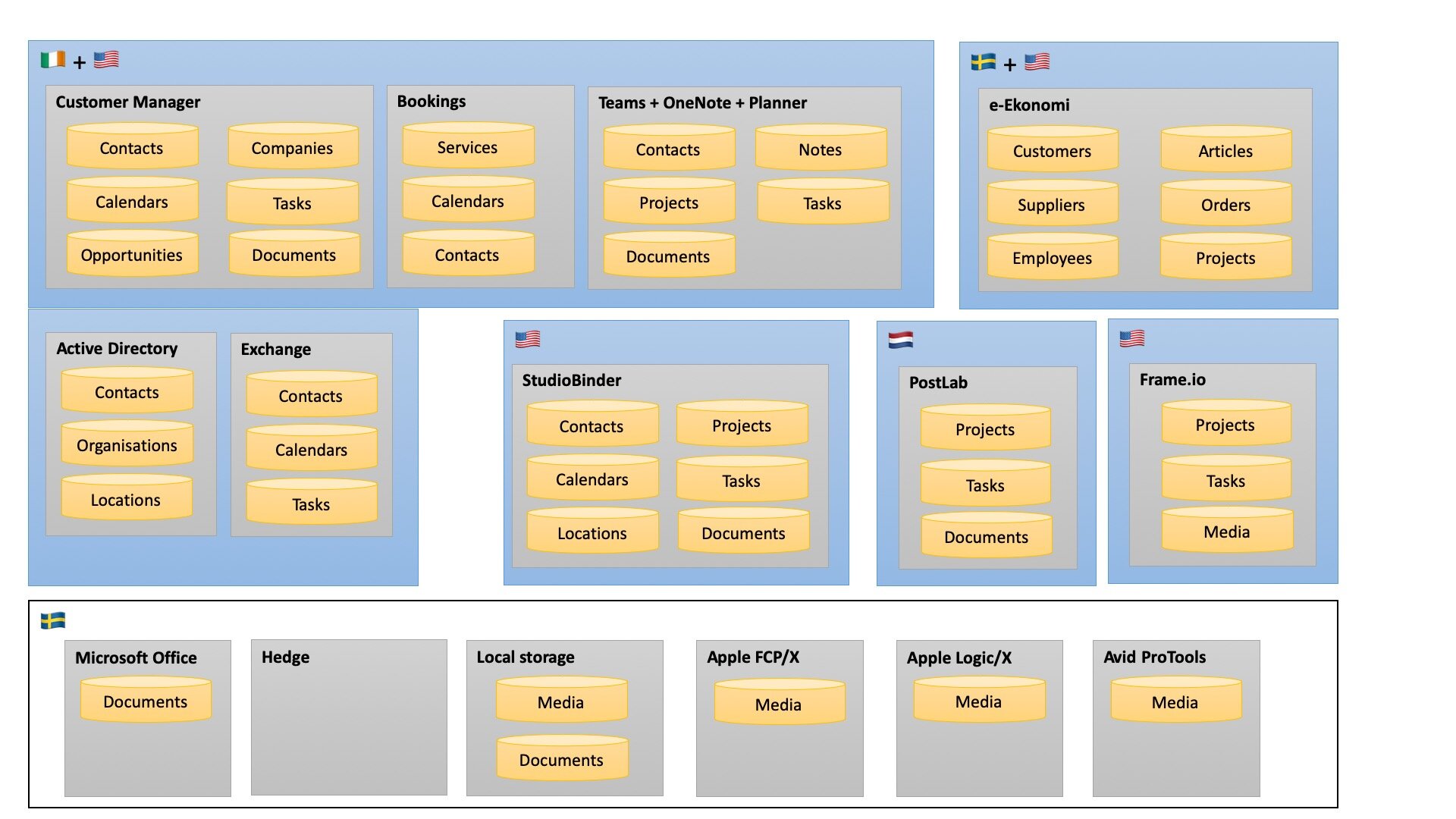EA case study - top-down or bottom-up?
If we follow the traditional way of software development we do requirements (waterfall or agile) then development in iterations.
With architecture, using IAF, after contextual layer, you start to define IS-services, then logical components and finally select physical applications.
But what about existing systems, standard applications and software as a service in the cloud?
Main application landscape for the film production company with both SaaS and applications run locally
We already have a lot of legacy even if we re-started everything from scratch a few years back.
Good luck as a small conpany with trying to influence Apple, Avid or Adobe on their roadmap for their NLE’s.
Finacials and HR are run as SaaS in the cloud (Visma eEkonomi and Tid), with regular updates and customized to a Swedish environment. The benefit for a detailed EA is not very high. However, as this application is the master for project id’s, we may need to integrate to other services.
The question is therefore why Enterprise Application architecture today?
Based on the situation as today for the film produktion company, these are the reasons why we need a lightweight application architecture.
Integrations between SaaS and applications to increase throughput, e.g. faster workflow.
Identify reasons for new SaaS or new applications and support product evaluation
Support development of a very few number of business unique software services, e.g. micro-services architecture.
After Christmas break will I come back to describe how this lightweight application architecture will look. Hint, neither strictly top- down or bottom-up. Instead, little of both.
For you who visited the updated homepage for the film production company, you will se that we doesn’t talk about EA all.
Why is very simple. The audience for this site doesn’t care about EA, they care about film production.
